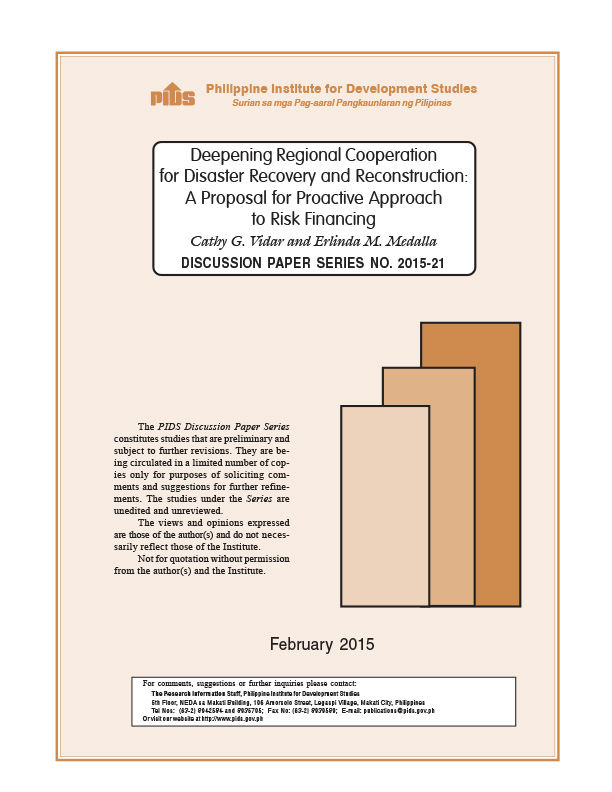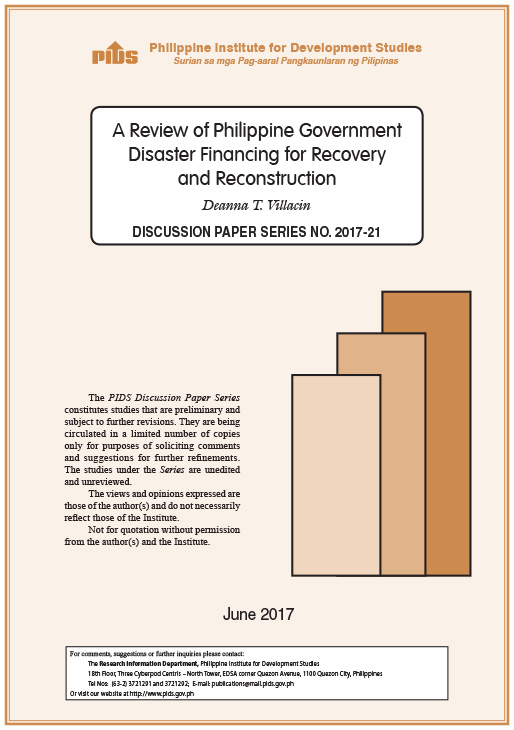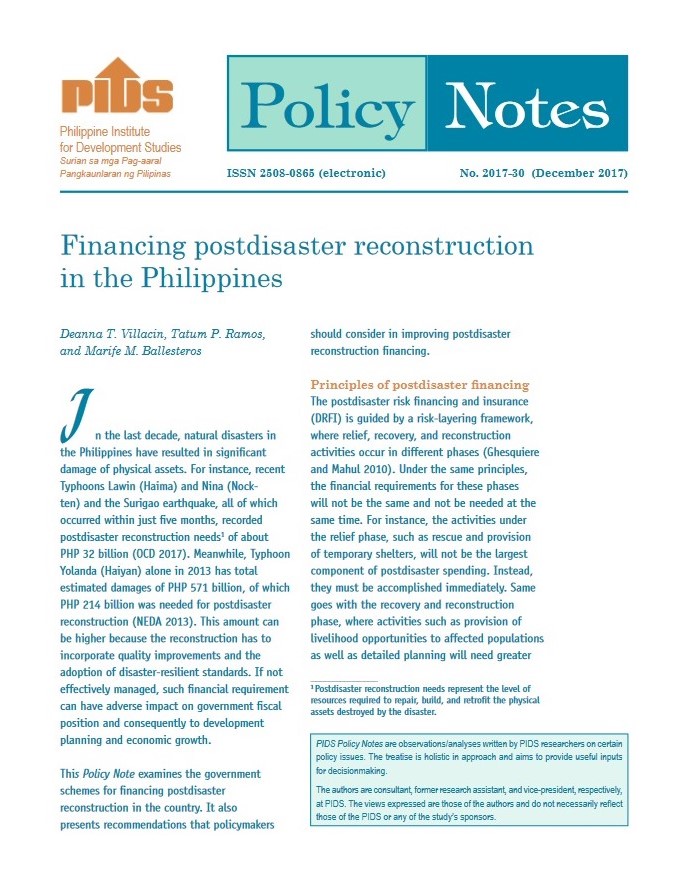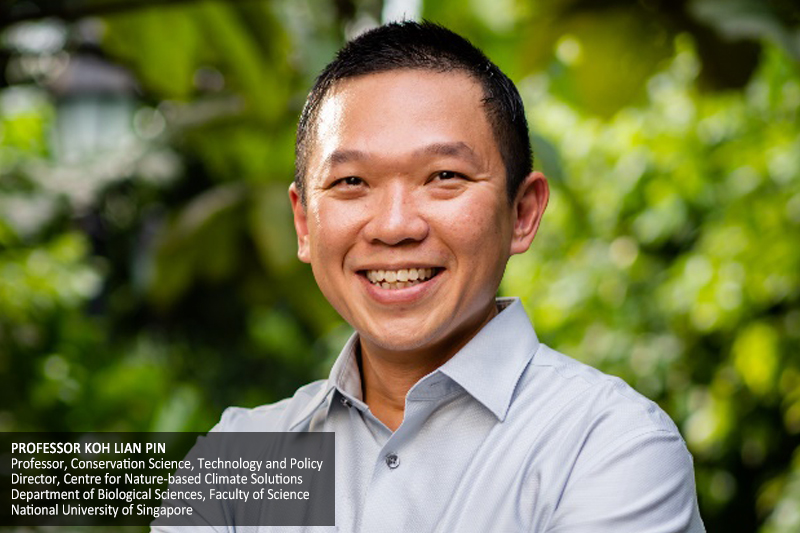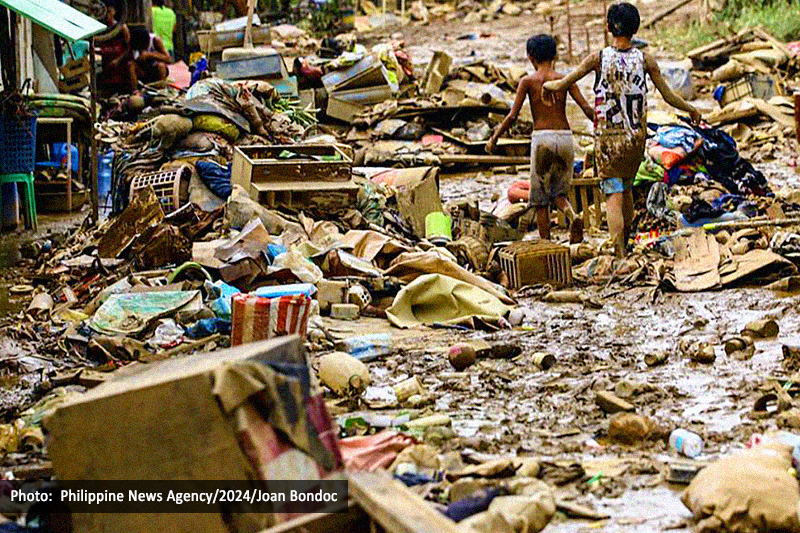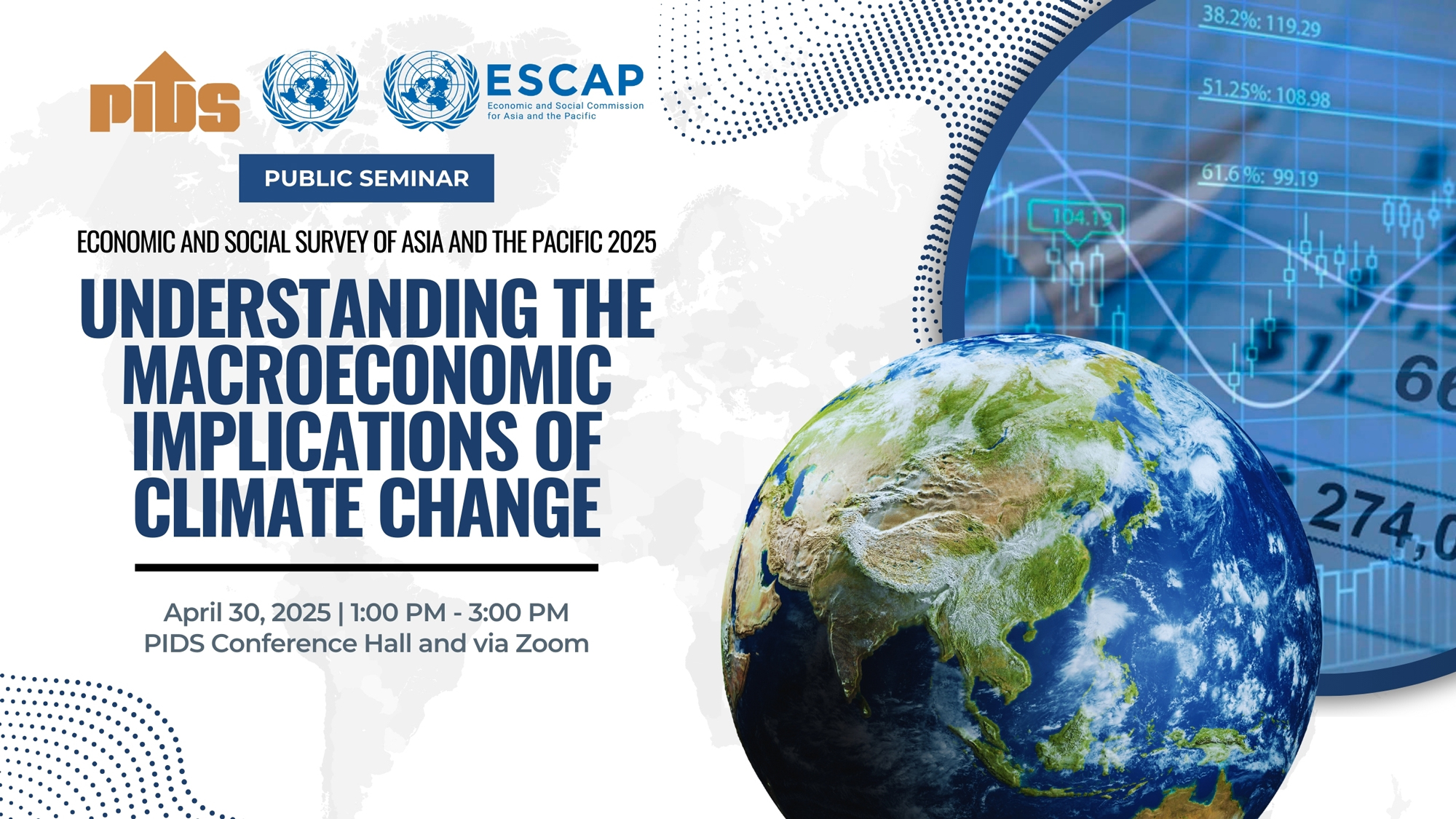State think tank Philippine Institute of Development Studies (PIDS) is urging a review of the government’s disaster risk financing and insurance (DRFI) program to speed up recovery efforts during calamities and prevent further disruption of economic activities in affected areas.
The Philippines remains among the most disaster-prone countries in the world. Citing a catastrophe modeling data from the World Bank, PIDS said the country faces annual average losses of P133.2 billion from tropical cyclones alone.
Despite this, Philippine post-disaster recovery and reconstruction is characterized by large funding gaps, ad hoc management and arrangements, and protracted periods of implementation of projects.
“Insufficiency and inefficiency of DRFI instruments or mechanisms as well as constraints or bottlenecks in the flow of funds or budget execution are main factors,” said PIDS research fellow Deanna Villacin in a discussion paper titled “A Review of Philippine Government Disaster Financing for Recovery and Reconstruction.
Villacin said the government has been relying mainly on budget allocations and international aid to fund recovery and reconstruction.
The uncertainties of annual budget allocations and the protracted flow of funds tend to slow down reconstruction and rebuilding activities in affected areas, thus affecting economic recovery.
To mitigate the impact of disaster, the government has to improve its overall disaster risk financing and insurance program,” she said.
PIDS recommends the use of various financing and insurance instruments that take into account risk profile, fiscal position and market conditions.
Among the instruments that may be used, are quick-disbursing insurance products such as parametric insurance that does not indemnify the full loss but makes payment upon occurrence of a catastrophic event.
The Philippines remains among the most disaster-prone countries in the world. Citing a catastrophe modeling data from the World Bank, PIDS said the country faces annual average losses of P133.2 billion from tropical cyclones alone.
Despite this, Philippine post-disaster recovery and reconstruction is characterized by large funding gaps, ad hoc management and arrangements, and protracted periods of implementation of projects.
“Insufficiency and inefficiency of DRFI instruments or mechanisms as well as constraints or bottlenecks in the flow of funds or budget execution are main factors,” said PIDS research fellow Deanna Villacin in a discussion paper titled “A Review of Philippine Government Disaster Financing for Recovery and Reconstruction.
Villacin said the government has been relying mainly on budget allocations and international aid to fund recovery and reconstruction.
The uncertainties of annual budget allocations and the protracted flow of funds tend to slow down reconstruction and rebuilding activities in affected areas, thus affecting economic recovery.
To mitigate the impact of disaster, the government has to improve its overall disaster risk financing and insurance program,” she said.
PIDS recommends the use of various financing and insurance instruments that take into account risk profile, fiscal position and market conditions.
Among the instruments that may be used, are quick-disbursing insurance products such as parametric insurance that does not indemnify the full loss but makes payment upon occurrence of a catastrophic event.

